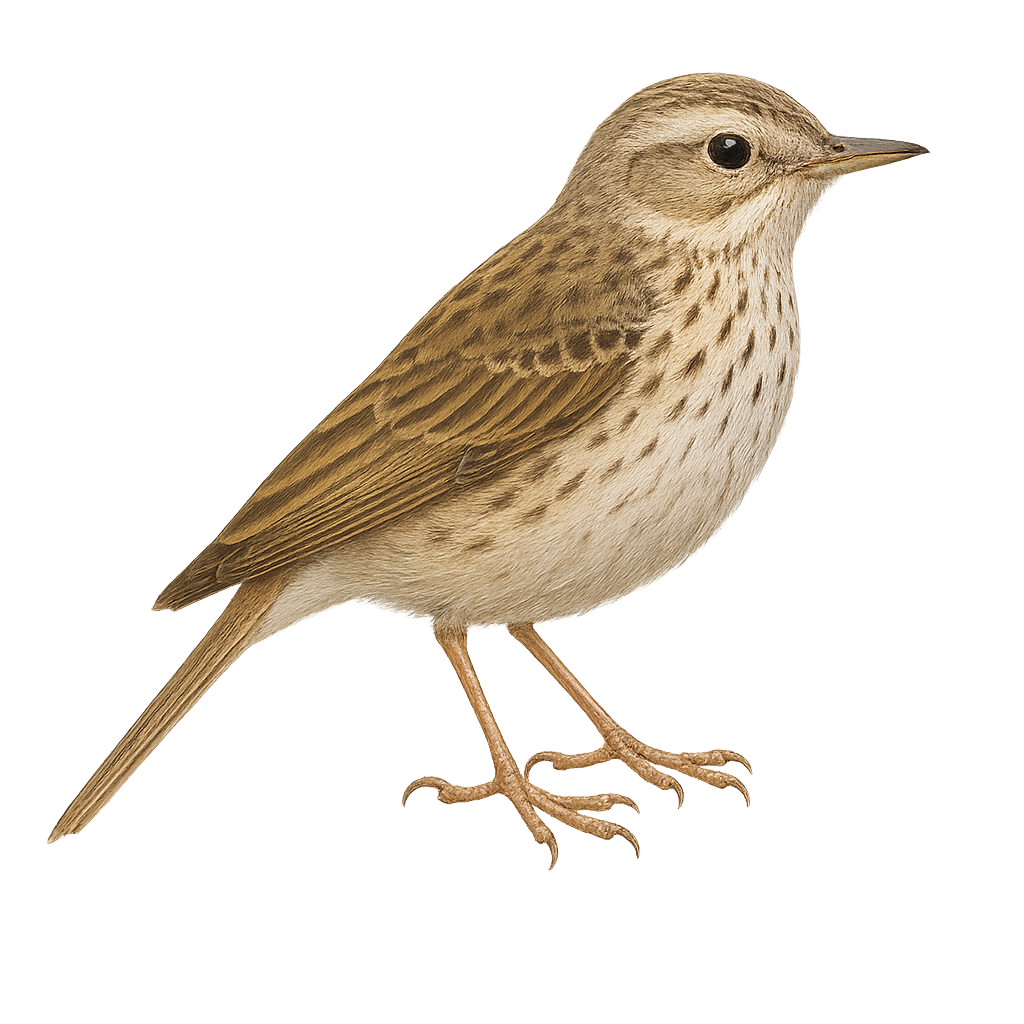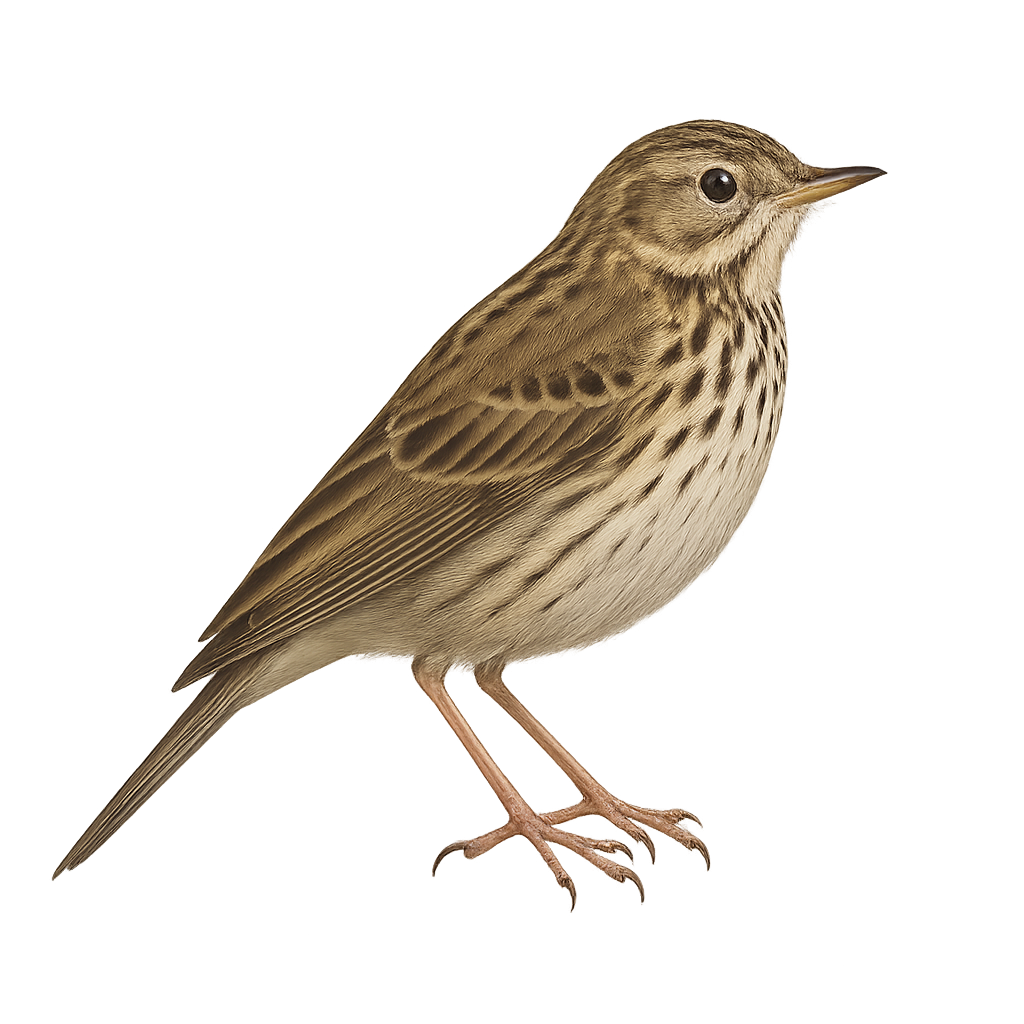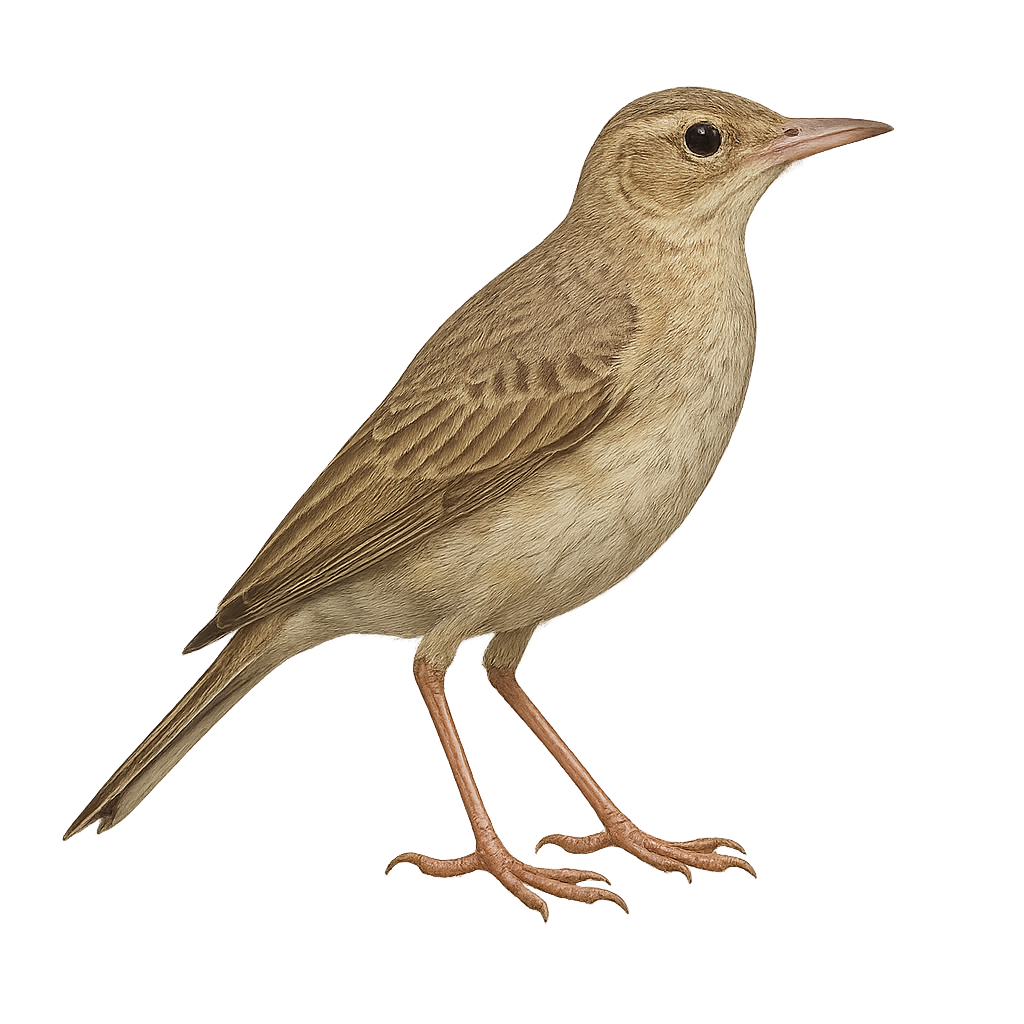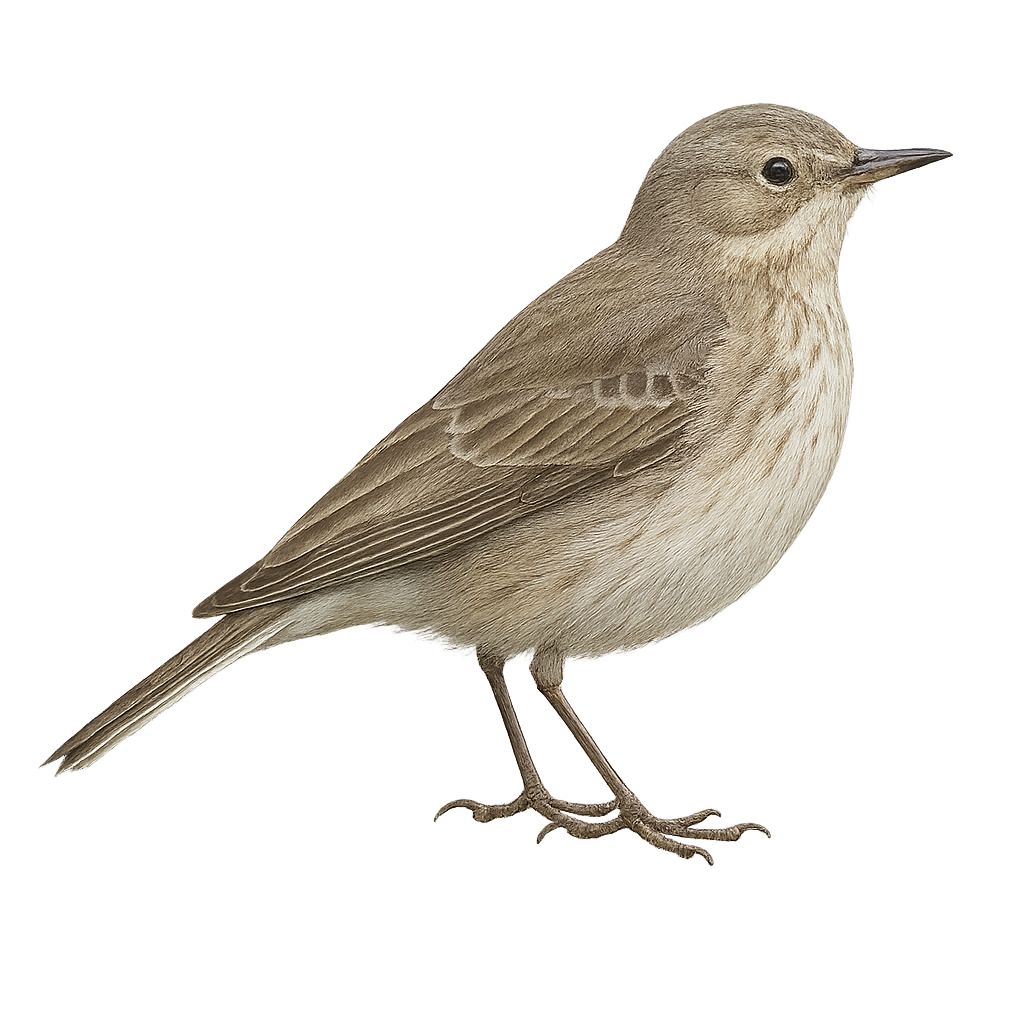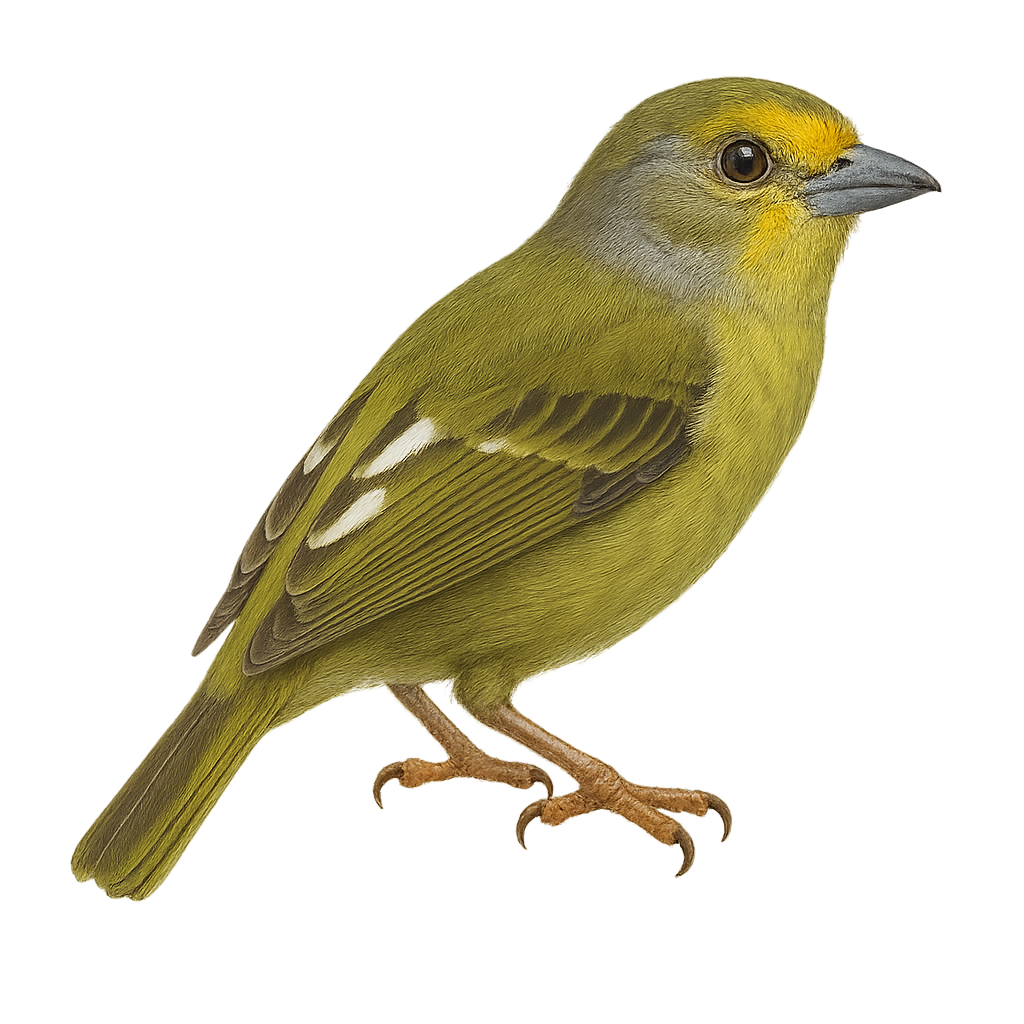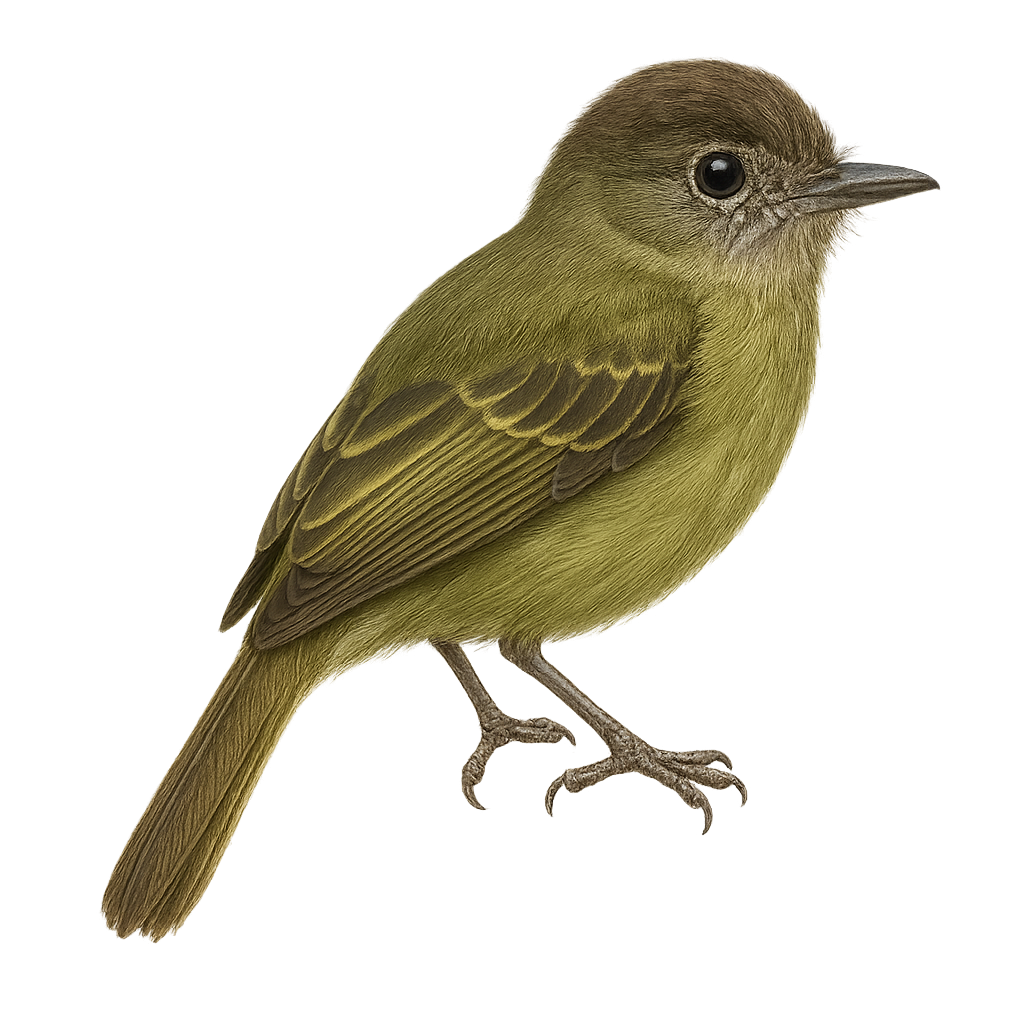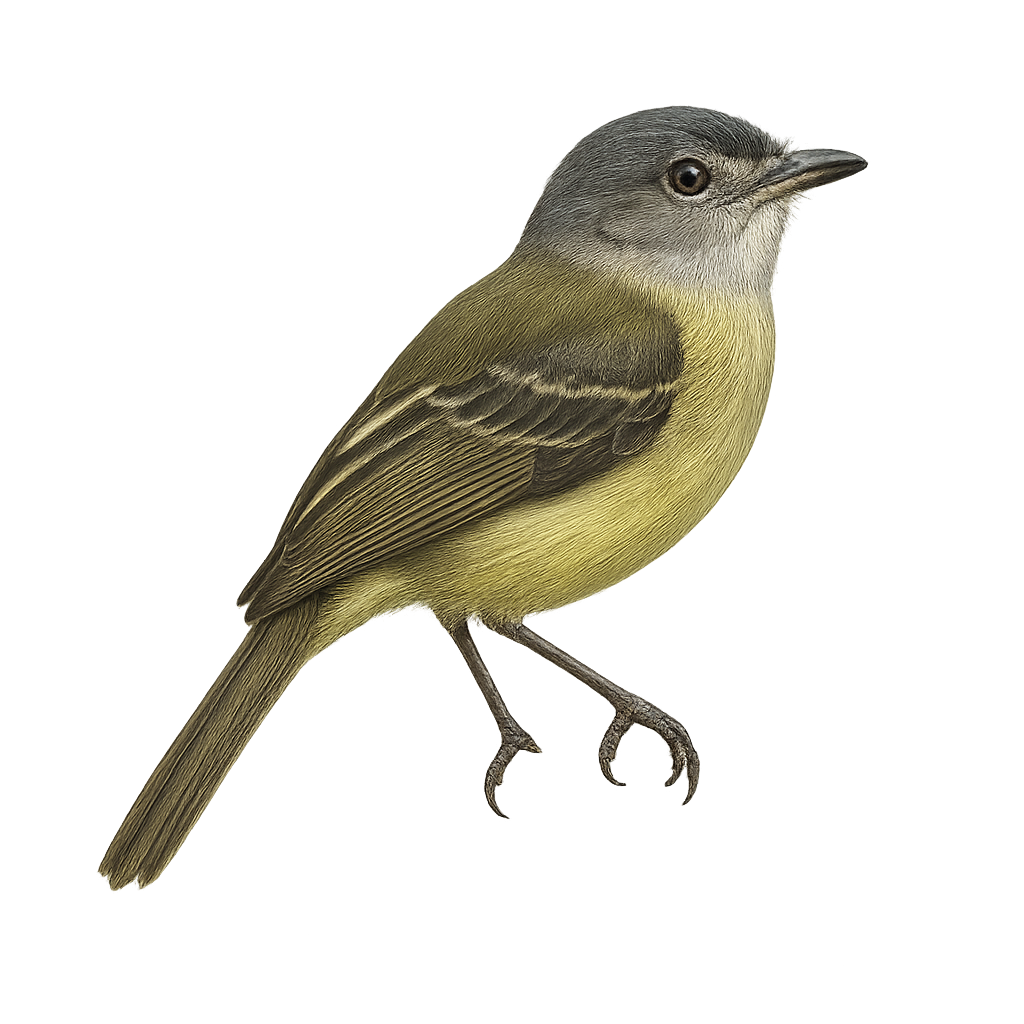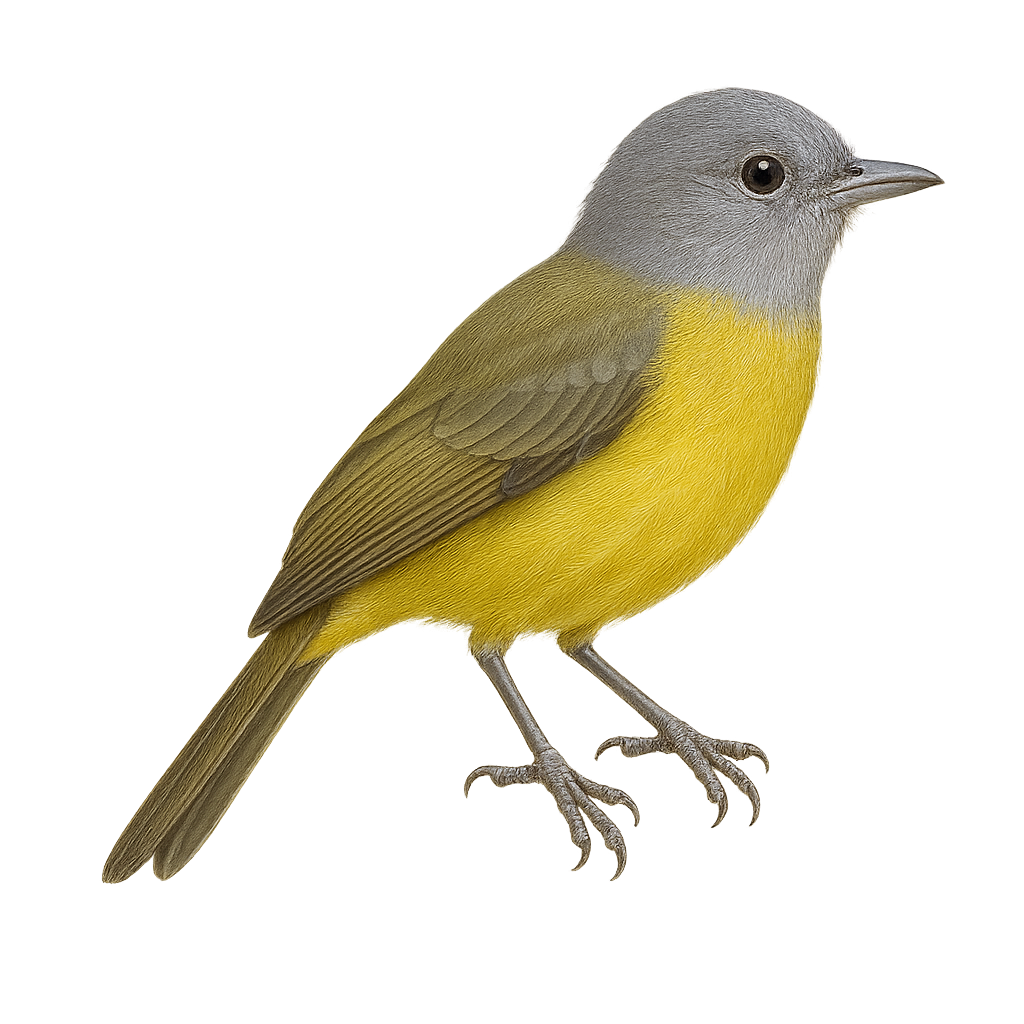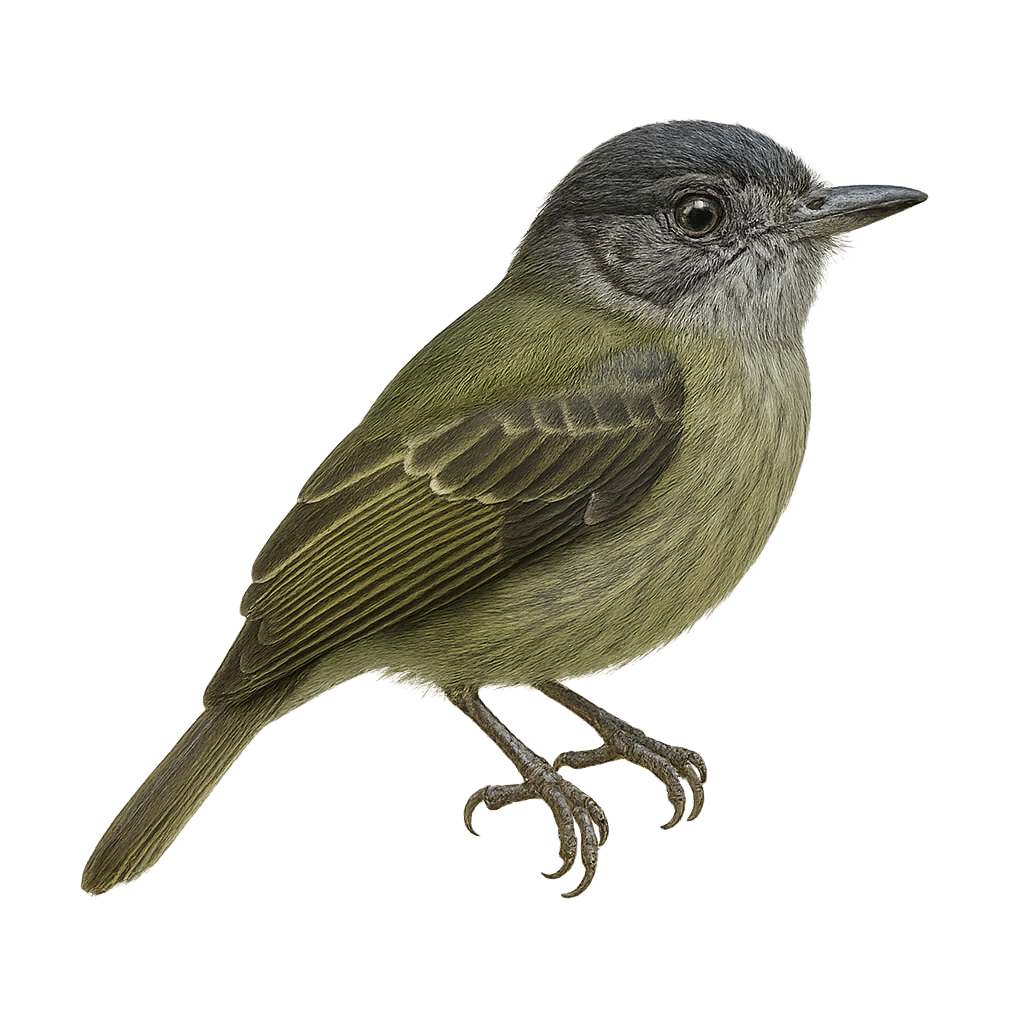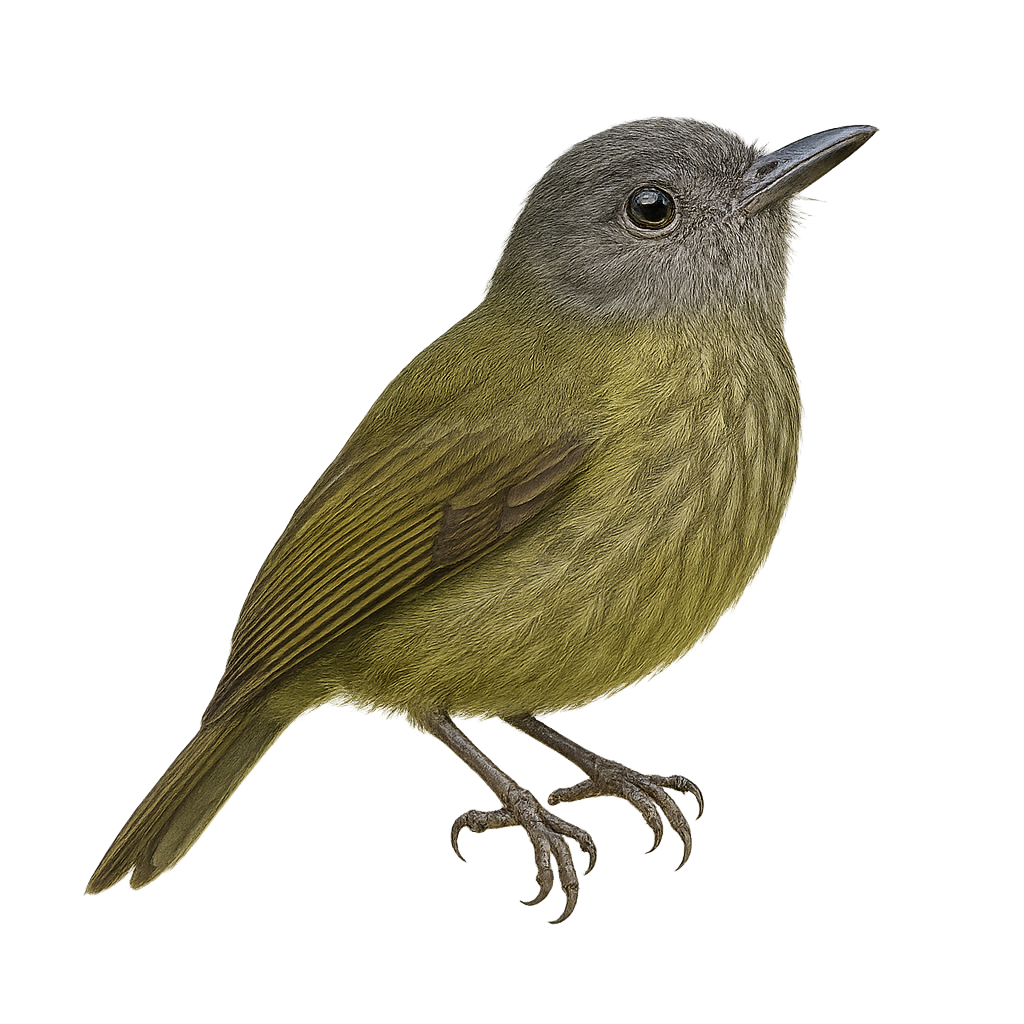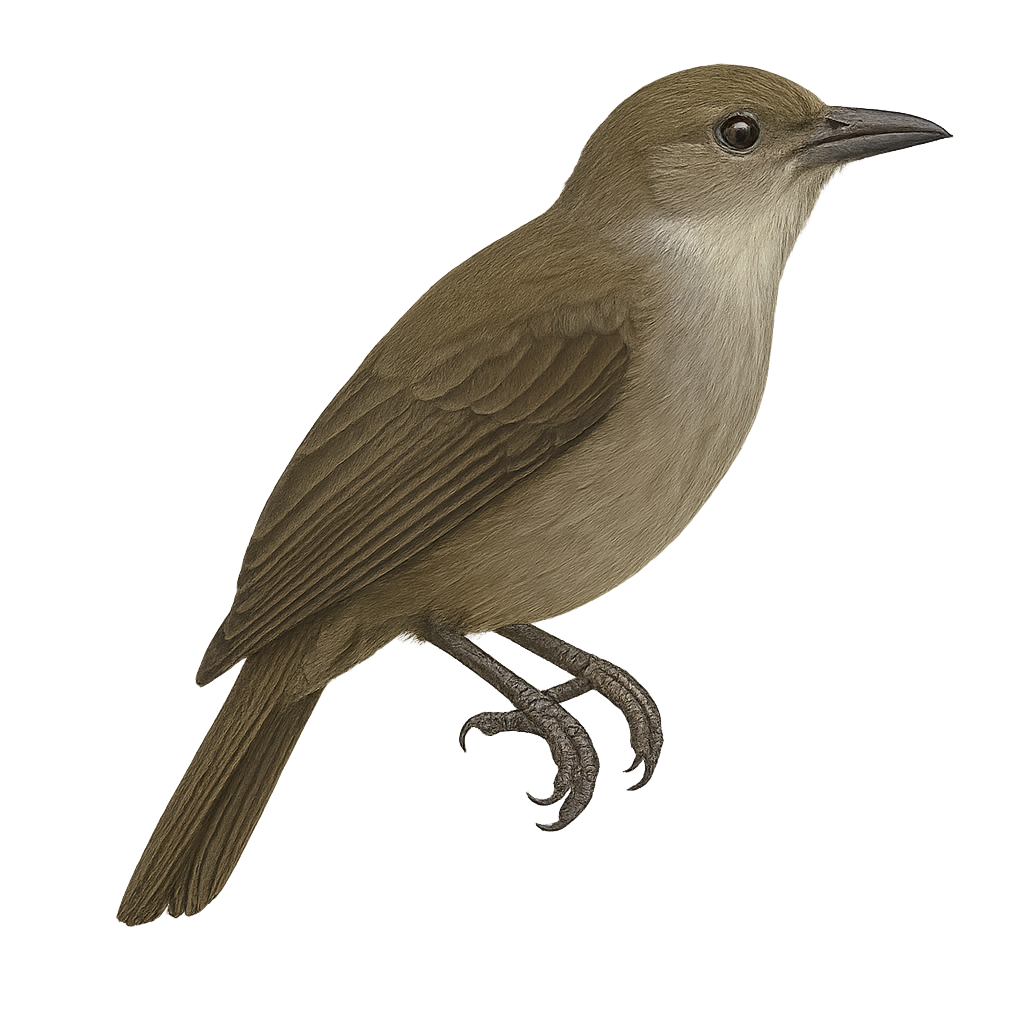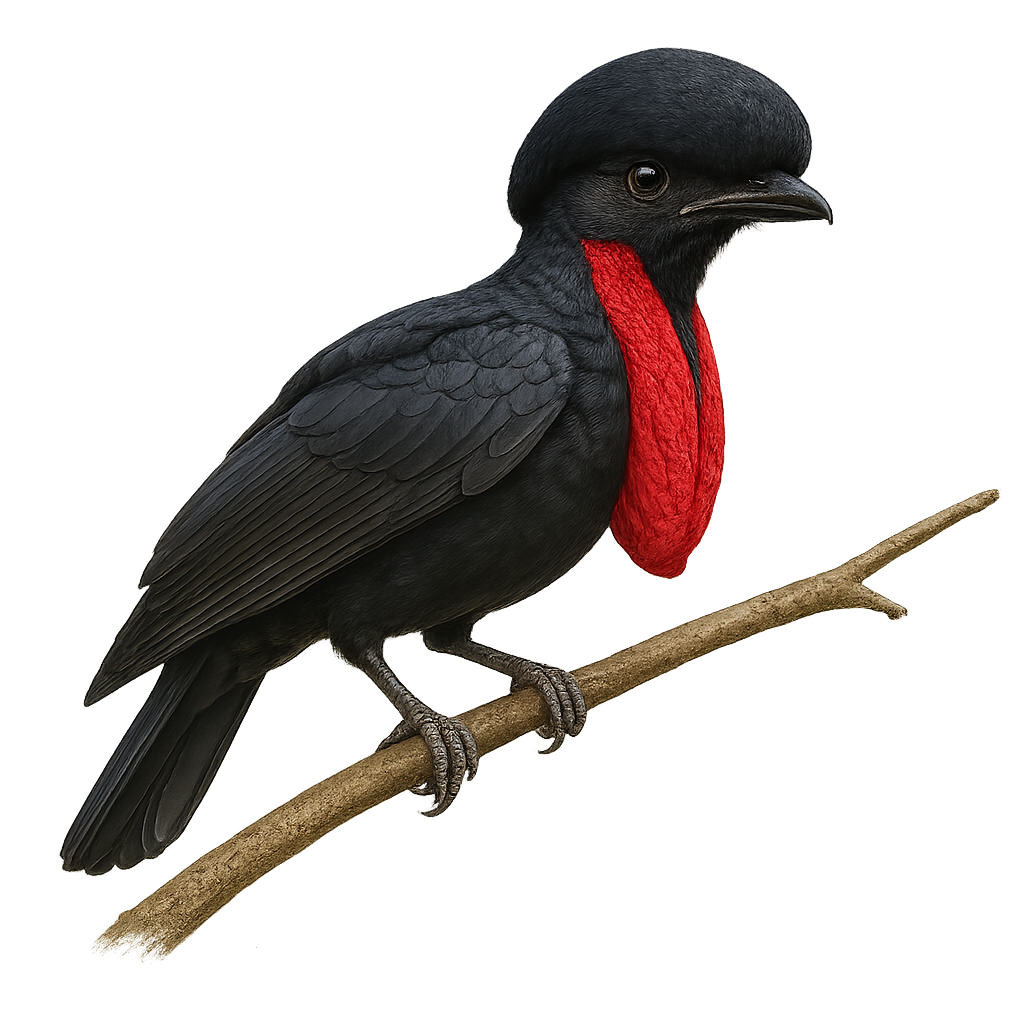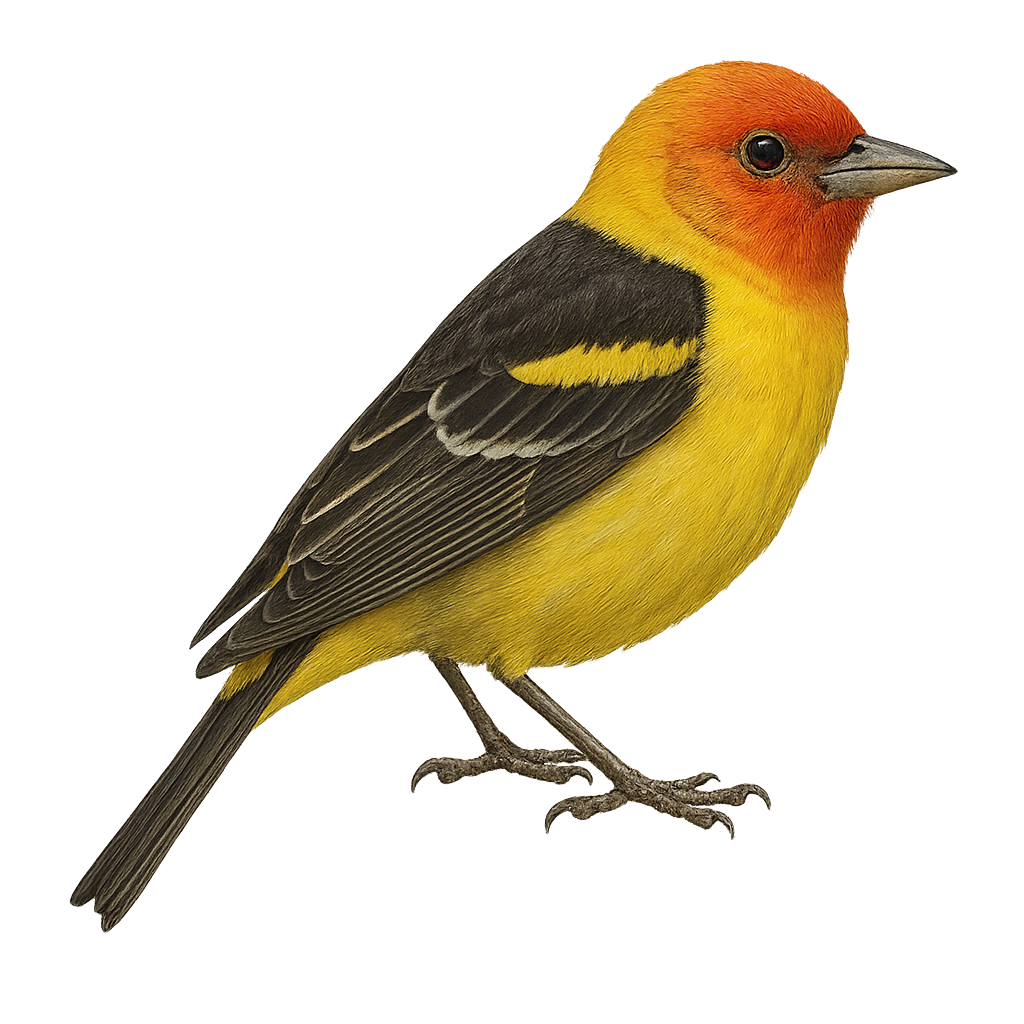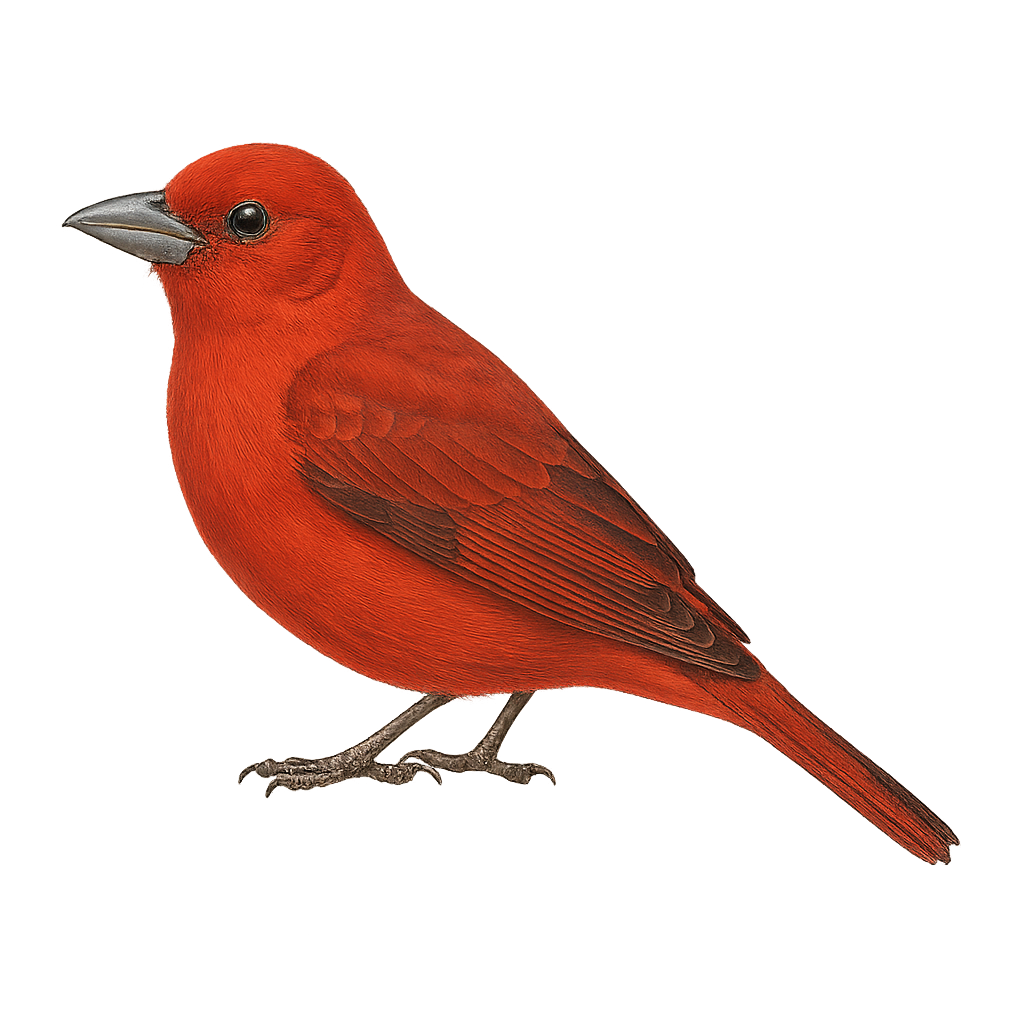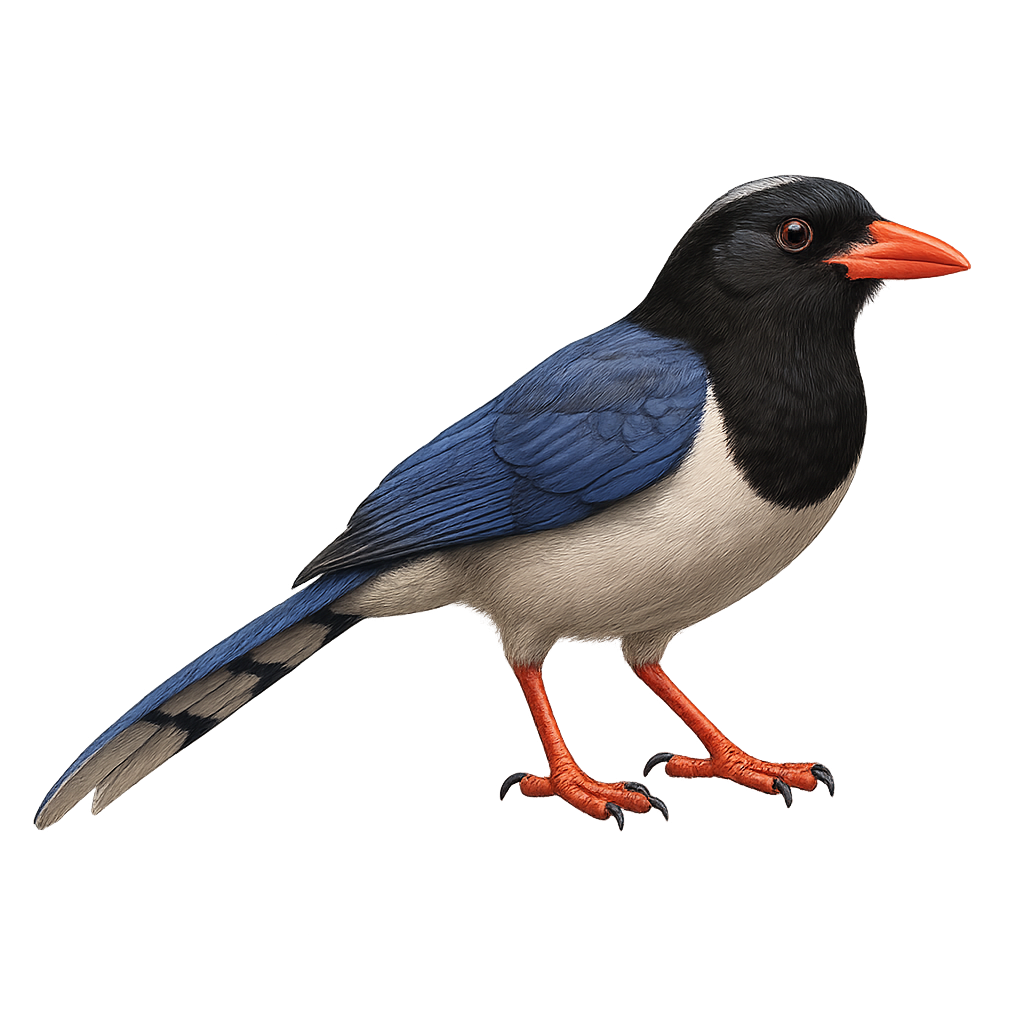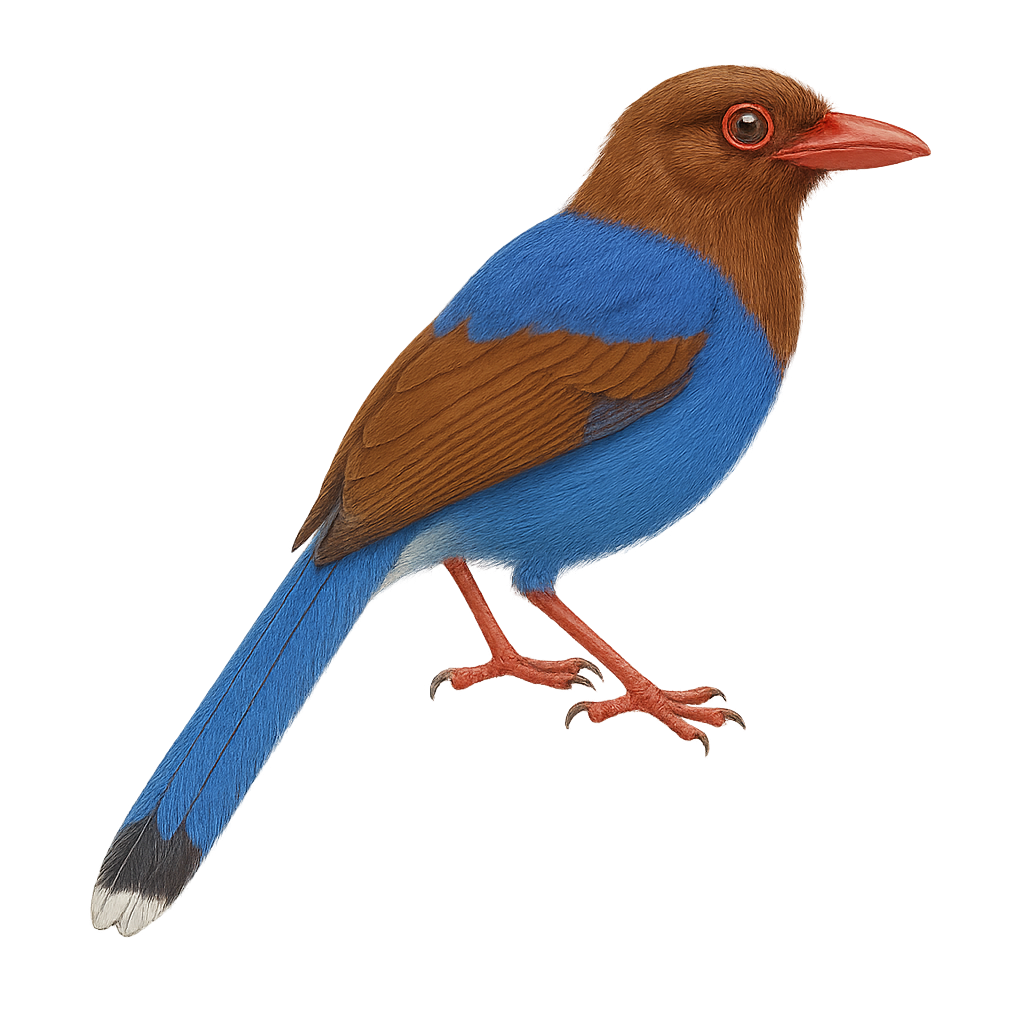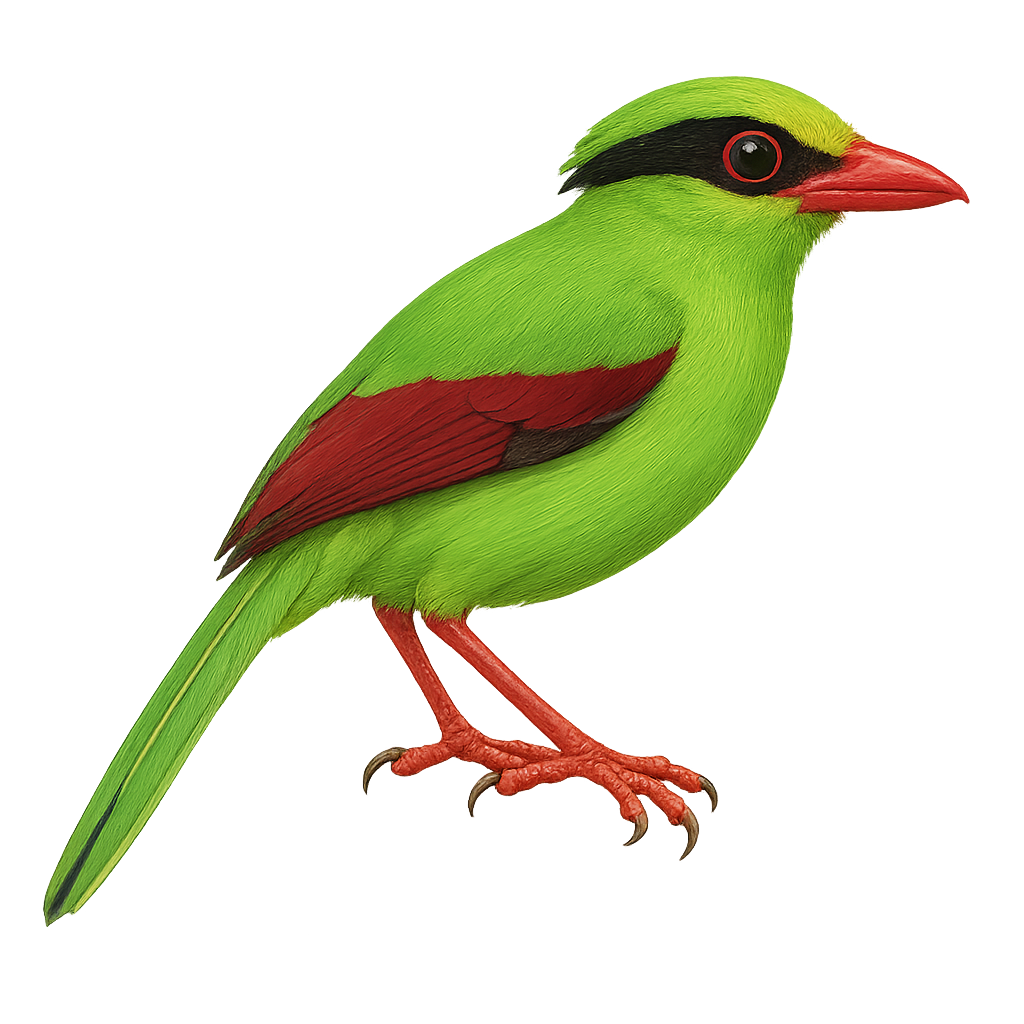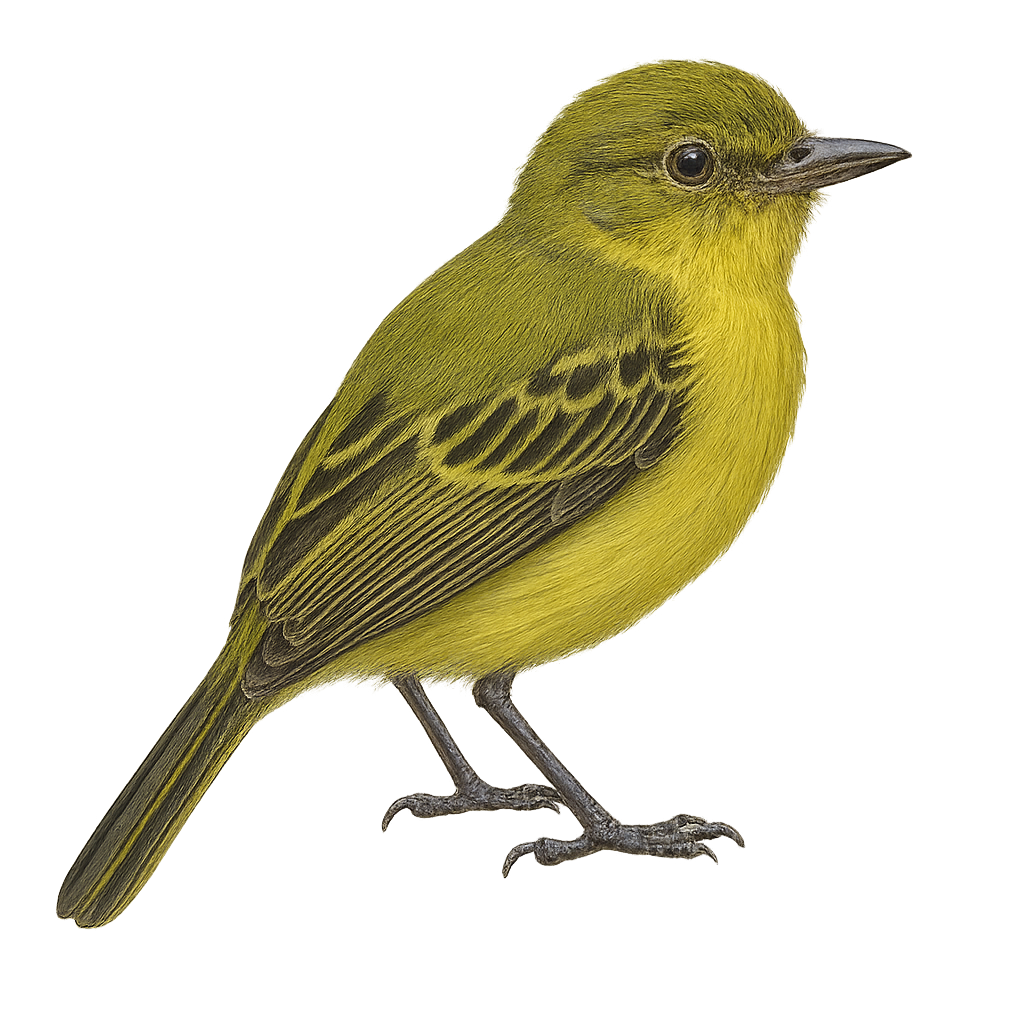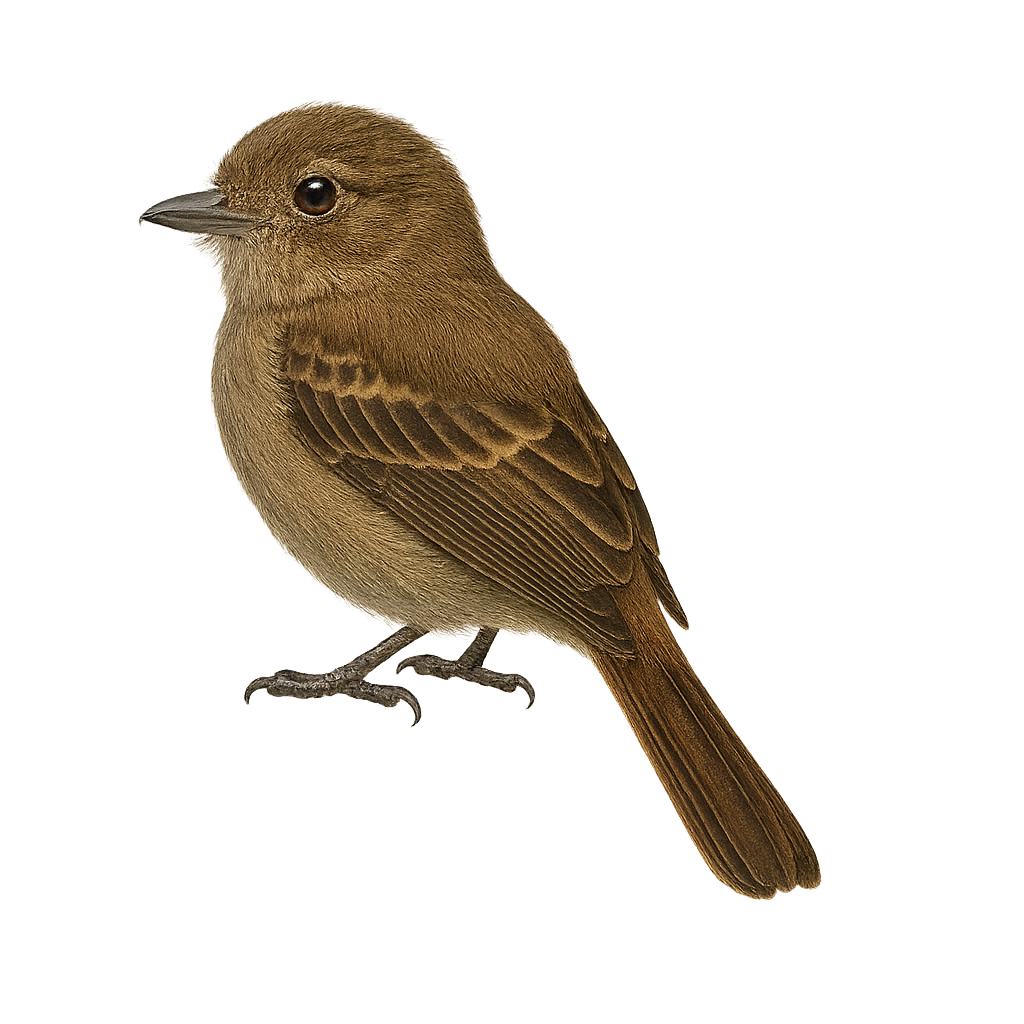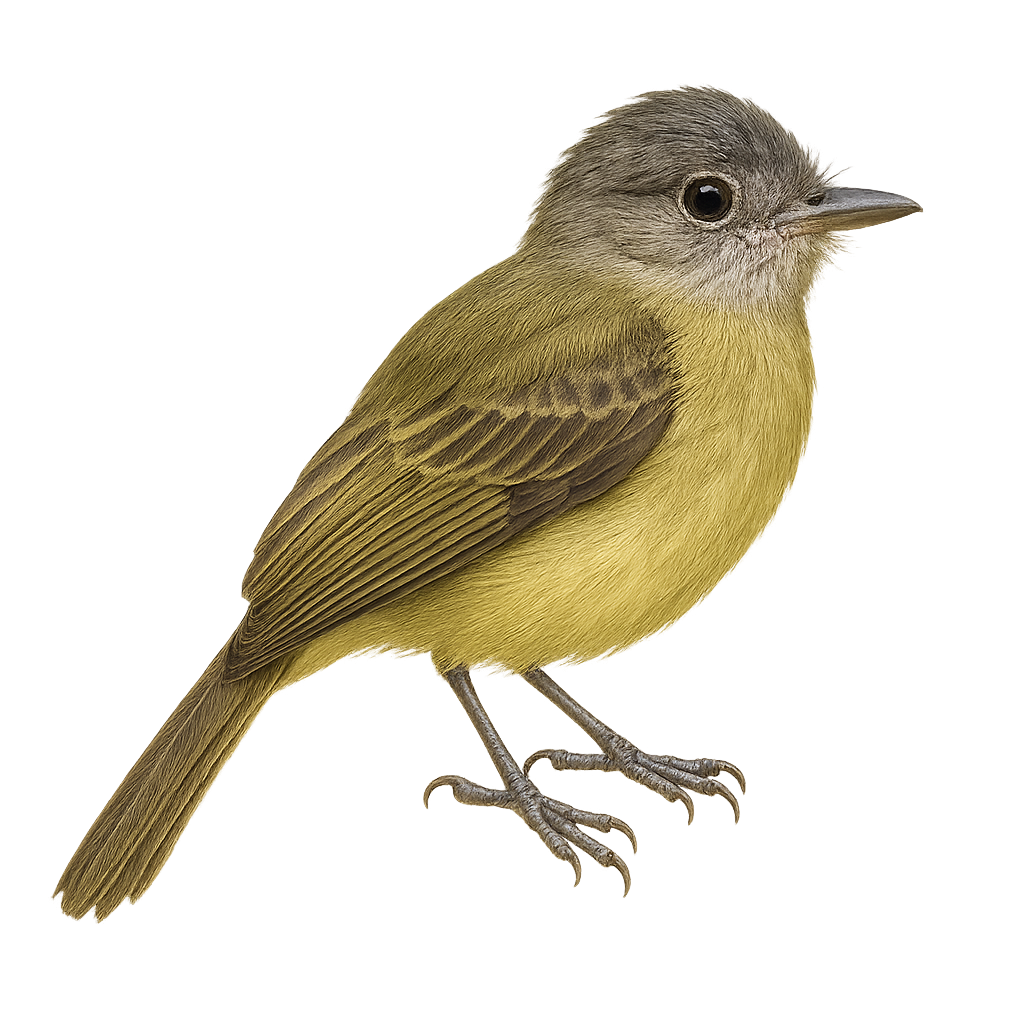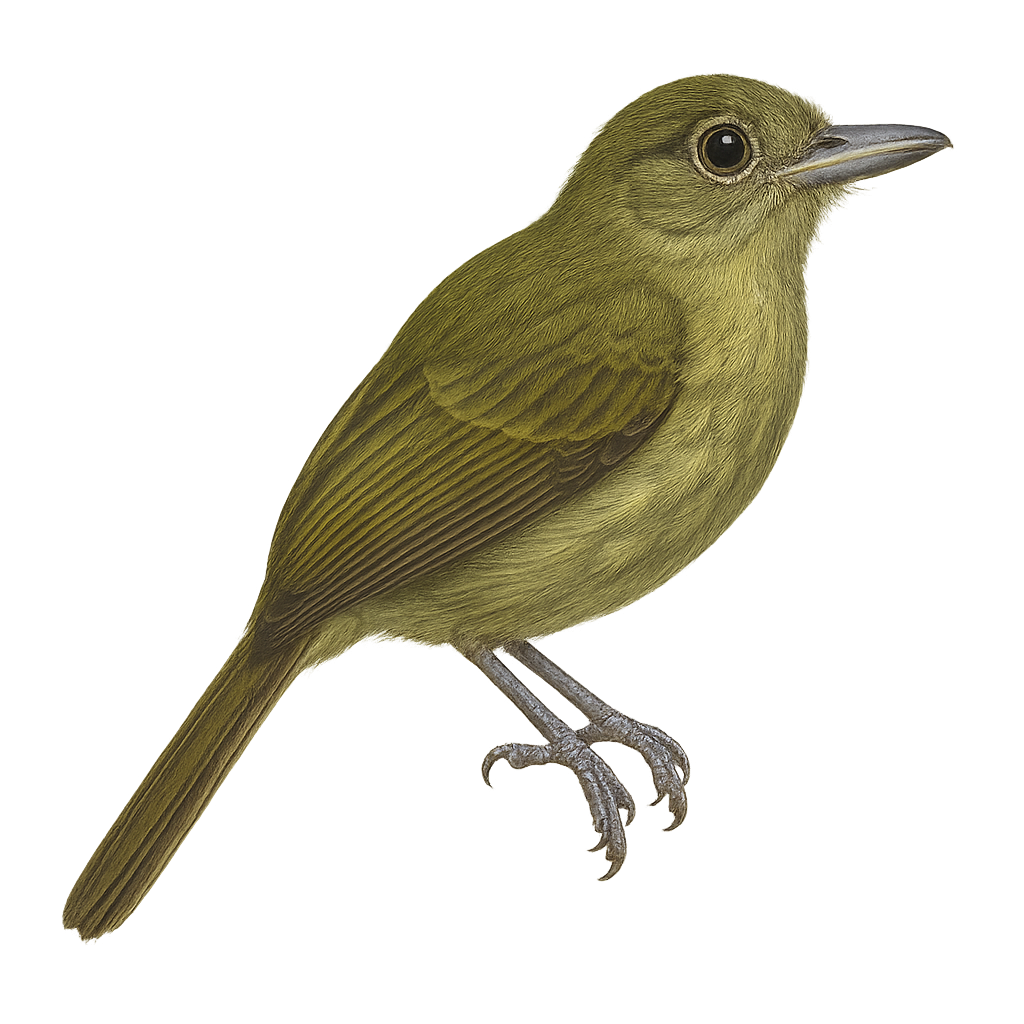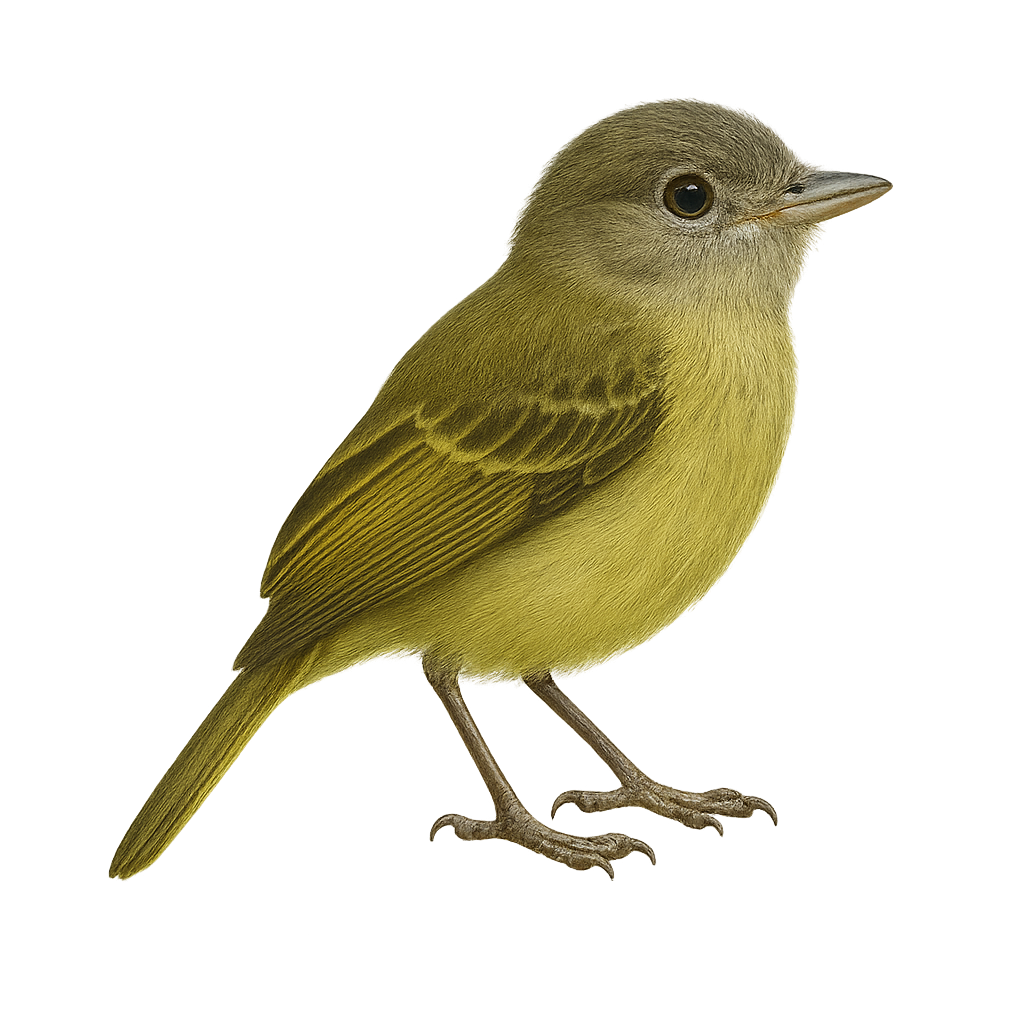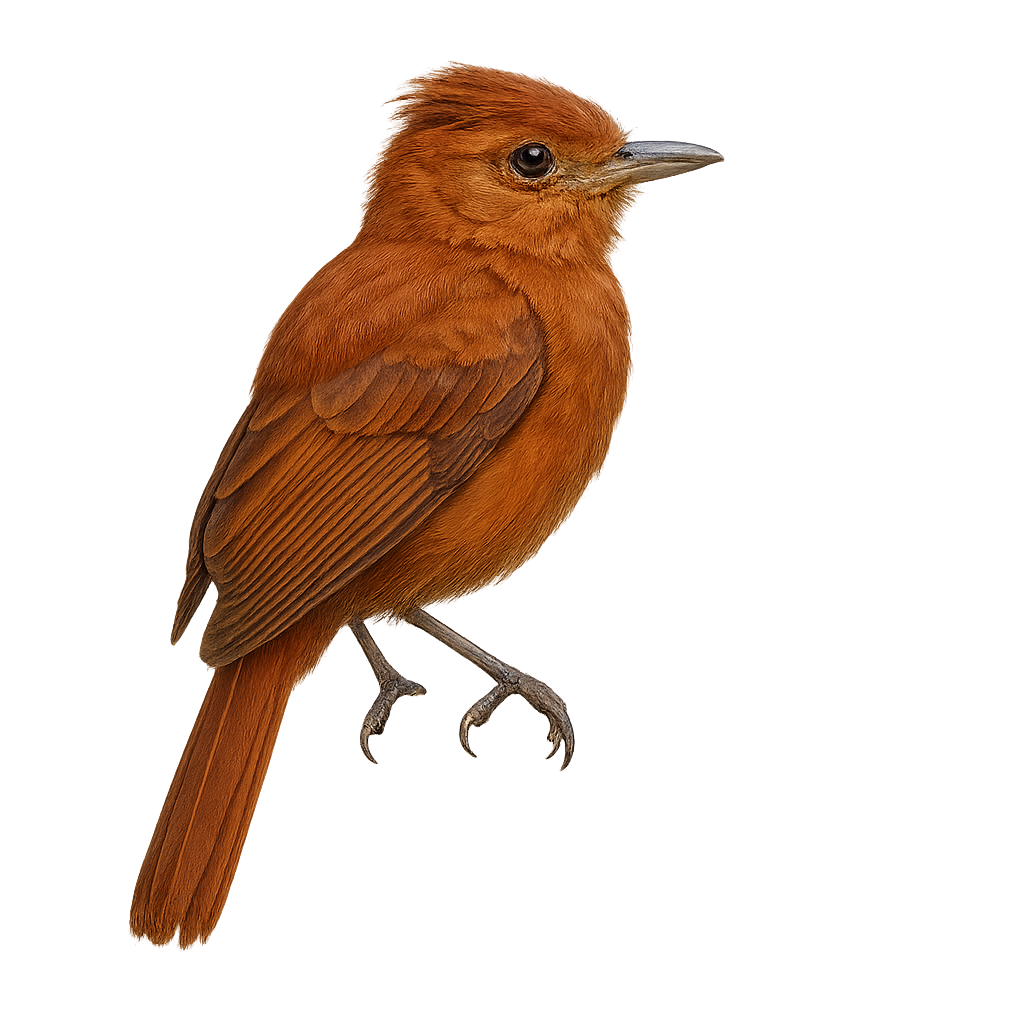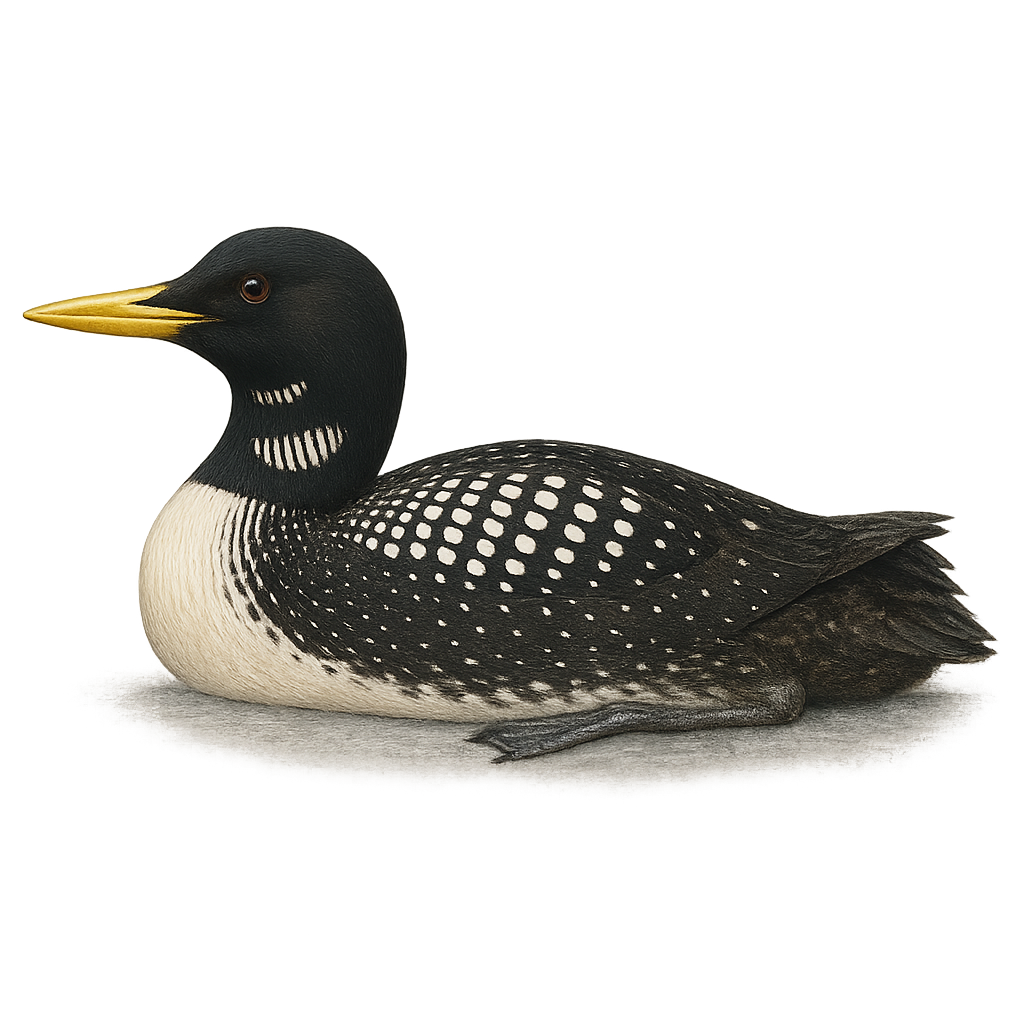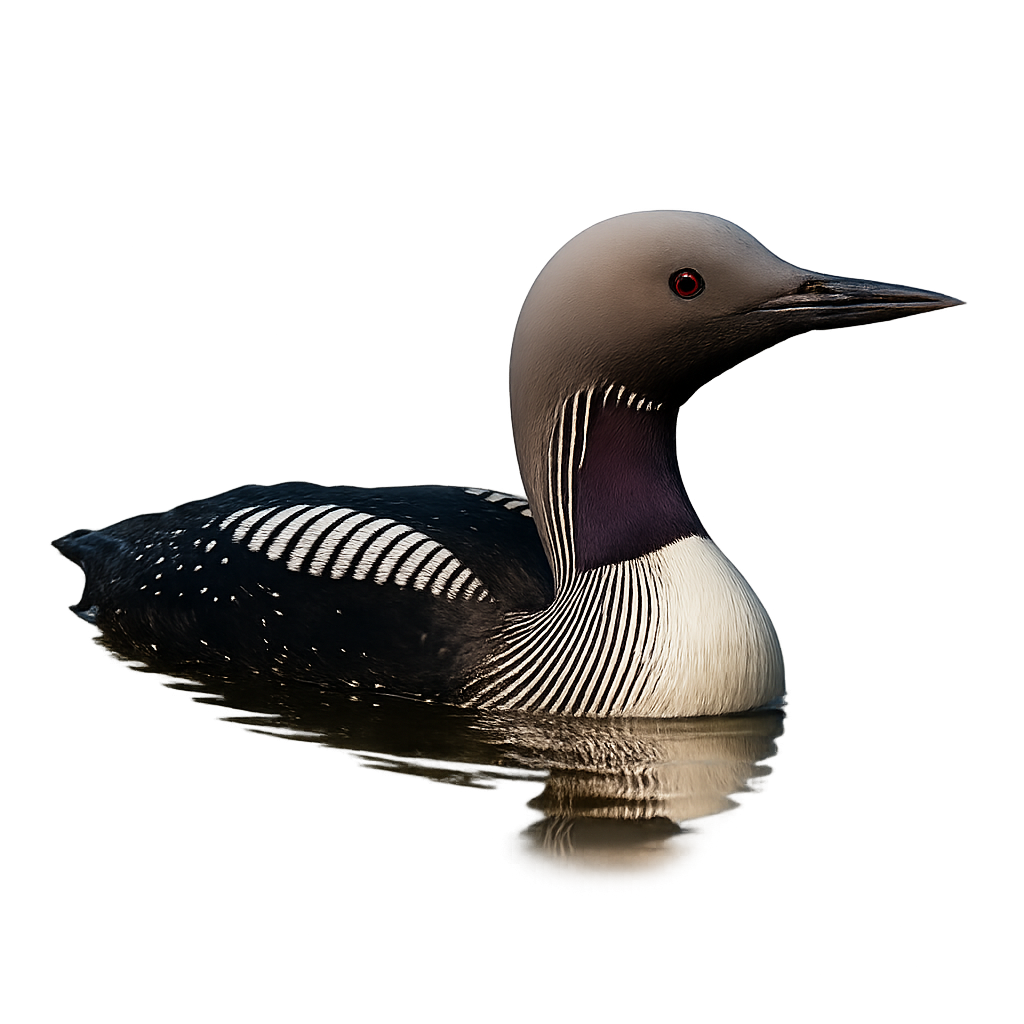The Berthelot's Pipit is a small bird endemic to the Canary Islands and Madeira. It is characterized by its light brown plumage with darker streaks on the back and paler underparts. This bird is often seen in open habitats such as moorlands, dunes, and rocky areas. It primarily feeds on insects and small invertebrates caught on the ground. The Berthelot's Pipit is a sedentary bird, well adapted to its insular environment. Its population is stable, although confined to a limited territory. Protecting its natural habitats is crucial for its long-term survival.
The tree pipit is a small passerine about 15 cm long with streaked brown upperparts and a pale breast. It inhabits woodland edges, open woodlands and hedgerows, feeding mainly on insects and seeds. During breeding, males sing in flight and from low perches to attract mates and defend territory.
The meadow pipit is a small passerine bird found primarily in meadows, cultivated fields, and farmland across Europe and Asia. It is distinguished by its brown streaked plumage on its back and belly, as well as its furtive movement and melodious song. This bird primarily feeds on insects and seeds, which it searches for in tall grasses. During the breeding season, it performs song flights, a characteristic that makes it easy to spot in its habitat.
The tawny pipit is a small passerine of 16–17 cm with finely streaked sandy plumage and a pale breast. It inhabits open steppe, dry fallow land and garrigue, feeding mainly on insects and seeds picked from the ground. During breeding, males perform singing flights and sing from low perches to attract females and defend their territory.
The red-throated pipit is a small migratory passerine bird found primarily in meadows, mountains, and Arctic areas across Europe and Asia. It is easily recognizable by its streaked brown plumage, red-orange throat, and furtive movement. This bird primarily feeds on insects and seeds, which it captures by running or foraging in the grass. During the breeding season, it performs song flights, a characteristic that makes it easy to spot in its habitat.
The Piprites chloris, or Olive-green Tyrannulet, is a small, colorful bird found in the tropical forests of South America. It is recognizable by its olive-green plumage and slightly lighter head. This passerine is known for its discreet behavior and ability to blend into dense foliage. It primarily feeds on insects and fruits, which it captures with agility thanks to its quick and precise movements. The Olive-green Tyrannulet is often observed in small groups, although it can also be solitary. Its breeding season varies by region but is generally active during the rainy season when food is plentiful.
The Sepia-capped Flycatcher, scientifically known as Leptopogon amaurocephalus, is a small bird from the Tyrannidae family. It is characterized by its dark brown head and lighter underparts. This modest-sized bird is often hard to spot in its natural habitat due to its discreet plumage. It is primarily found in the tropical and subtropical forests of South America, where it feeds on insects. Its song is a gentle whistle, often heard before the bird is seen. This passerine is a perfect example of adaptation to its environment, using its plumage to blend into dense foliage. Although not threatened, preserving its habitat is crucial for its survival.
The White-browed Flycatcher is a small bird from the Tyrannidae family, primarily found in the humid tropical forests of South America. It is characterized by its olive plumage on the back and white on the belly, with a distinctive white stripe above the eye. This passerine is often seen catching insects in flight, thanks to its agile and swift movements. It prefers dense undergrowth where it can easily hide. Although discreet, its melodious and repetitive song often reveals its presence. It plays an important role in the ecosystem by regulating insect populations.
The Rufous-bellied Flycatcher, or Mionectes rufiventris, is a small bird known for its distinctive plumage. Its rufous belly contrasts with the rest of its generally duller body. This bird is primarily found in the humid and subtropical forests of South America, where it feeds mainly on insects and small fruits. It is often seen alone or in small groups, moving nimbly through dense foliage. Although discreet, its melodious song can be heard from afar, adding a sonic touch to its natural surroundings.
The Leptopogon taczanowskii, or Taczanowski's Tyrannulet, is a small bird from the Tyrannidae family. It is primarily found in the humid forests of the Andes, where it moves nimbly through dense vegetation. Its plumage is mainly olive green with lighter shades on the belly, allowing it to blend into its surroundings. This bird is known for its distinctive song, often heard before seen. It feeds mainly on insects, which it catches in flight or finds on leaves. Taczanowski's Tyrannulet is a discreet bird, often difficult to observe due to its wary behavior and dense habitat.
The Streak-necked Flycatcher, or Mionectes striaticollis, is a small bird from the Tyrannidae family. It is characterized by its olive-brown plumage with distinctive white streaks on its neck and chest, giving it a unique appearance. This bird is primarily found in the humid forests of the Andes, where it feeds on insects and fruits. Known for its active behavior and melodious song, the Streak-necked Flycatcher is a diurnal bird often seen darting through the canopy. Although relatively tolerant of human presence, it prefers dense habitats where it can easily hide. Its population is stable, and it is not considered threatened.
The Thick-billed Berrypecker is a medium-sized bird endemic to the tropical forests of New Guinea. It is characterized by its thick and robust beak, adapted to its diet mainly consisting of berries and fruits. Its plumage is generally dark, with shades of olive green and brown, allowing it to blend into its dense forest habitat. This bird is often observed in small groups or pairs, actively moving through the canopy in search of food. Although little studied, it likely plays an important role in seed dispersal, thus contributing to the regeneration of its ecosystem. Its population is currently stable, but deforestation could pose a future threat.
The Cephalopterus glabricollis, commonly known as the Bare-necked Umbrellabird, is a fascinating bird from the Cotingidae family. It is primarily found in the humid forests of Costa Rica and Panama. This bird is notable for its large size and glossy black plumage. Males feature a spectacular crest and a bare neck that turns bright red during the breeding season. They produce deep, resonant sounds to attract females. The females, more discreet, have less striking plumage. The Bare-necked Umbrellabird is an arboreal bird, spending most of its time in the canopy searching for fruits, its main diet. Unfortunately, it is threatened by deforestation, which reduces its natural habitat.
The Flame-colored Tanager, or Piranga bidentata, is a vibrant bird from the Cardinalidae family, primarily found in the montane forests of Central America. It is distinguished by its bright plumage, ranging from vivid red to orange, and a sturdy beak suited for its varied diet. Males display more vivid colors than females, who are generally duller. This bird is often seen in pairs or small groups, feeding on fruits, insects, and nectar. It plays a crucial role in seed dispersal, aiding forest regeneration. Despite its striking appearance, it can be challenging to spot due to its dense habitat and discreet behavior.
The Western Tanager, or Piranga ludoviciana, is a colorful bird found mainly in North America. Males display a bright red head, vibrant yellow body, and black wings with white bars, while females have softer shades of yellow and olive. This migratory bird inhabits coniferous forests and wooded areas during the breeding season, then migrates south for the winter. It primarily feeds on insects and fruits, catching them in flight or foraging through foliage. The Western Tanager's song is melodious, consisting of short, varied phrases. Although its habitat is threatened by deforestation, the species is currently listed as of least concern by the IUCN.
The Red-headed Tanager, or Piranga erythrocephala, is a vibrant bird found mainly in the mountainous forests of Mexico. This passerine is notable for its bright red head, which contrasts with its yellow-green body and dark wings. Males display more vivid colors than females, who have a duller hue. They primarily feed on insects and fruits, which they find in the forest canopy. Their song is melodious and varied, often heard during the breeding season. Although their habitat is relatively restricted, they are not currently considered threatened. However, deforestation could pose a long-term risk to their populations.
The Hepatic Tanager, or Piranga flava, is a colorful bird primarily found in the forests and woodlands of Central and South America. This bird is easily recognizable by its bright red plumage in males, while females display more yellowish and greenish hues. It primarily feeds on insects and fruits, playing a crucial role in seed dispersal. The Hepatic Tanager is a sociable bird, often seen in small groups or pairs. It is also known for its melodious and varied song that echoes through the forests. Although it is quite tolerant of human presence, it prefers natural habitats away from disturbances.
The Red-billed Blue Magpie, or Urocissa erythroryncha, is a striking bird known for its vibrant plumage and long, bright red bill. It is primarily found in the forests of the Himalayas and wooded areas of Southeast Asia. This bird is easily recognizable by its vivid blue feathers, long tail, and black and white wings. The Red-billed Blue Magpie is a social bird, often seen in small groups. It feeds mainly on insects, fruits, and small vertebrates. Its song is varied and melodious, making it a favorite among birdwatchers. Although generally wary of humans, it may approach human settlements in search of food.
The Sri Lanka Blue Magpie, Urocissa ornata, is an endemic bird of Sri Lanka, known for its striking blue plumage and long tail. It features a chestnut-brown head and neck, contrasting with its vivid blue body. Its red eyes and bright orange beak add to its striking appearance. It primarily inhabits montane rainforests, feeding on fruits, insects, and small vertebrates. Sociable in nature, it lives in family groups and is known for its varied vocalizations. Although its habitat is limited, it adapts well to secondary forests. However, deforestation poses a threat to its population, classified as vulnerable by the IUCN.
The Common Green Magpie, scientifically known as Cissa chinensis, is a striking bird with predominantly green plumage accented by shades of blue and yellow. Its head features distinctive black feathers, and its beak is a vivid red. This bird primarily inhabits the dense tropical forests of Southeast Asia, where it feeds on insects, small reptiles, and fruits. Known for its discreet behavior, it blends seamlessly into the dense foliage. The Common Green Magpie is a social bird, often seen in small groups. Although its habitat is threatened by deforestation, it remains relatively common in some areas.
The Short-billed Flycatcher, or Rhynchocyclus brevirostris, is a small bird from the Tyrannidae family, primarily found in the humid tropical forests of Central and South America. It is recognizable by its short, broad bill, adapted for catching insects in flight. Its plumage is generally olive green above and paler below, allowing it to blend into the dense foliage. It is often seen alone or in pairs, actively moving in search of food. Its song is discreet, composed of soft, repetitive notes. Although its habitat is threatened by deforestation, it remains relatively common within its range.
The Yellow-breasted Flycatcher is a small passerine bird belonging to the Tyrannidae family. It is primarily found in the tropical rainforests of Central and South America, where it is distinguished by its bright yellow belly and olive back. This bird measures about 12 to 13 cm in length and weighs between 10 and 12 grams. Its beak is relatively broad and flattened, adapted for catching insects in flight. The song of the Yellow-breasted Flycatcher is a soft and melodious whistle, often heard in the forest canopy. It is mainly insectivorous but can also consume small fruits. Its ability to blend into dense foliage sometimes makes it difficult to spot, although it is quite common in its natural habitat.
The Brown-winged Schiffornis is a discreet and little-known bird belonging to the Tyrannidae family. It is mainly found in the humid tropical forests of Central and South America, where it blends in easily with its reddish-brown plumage. This bird measures about 16 to 18 cm in length and primarily feeds on insects caught in flight. It is often heard before being seen, thanks to its melodious and repetitive song. Although difficult to spot, it plays an important role in the ecosystem by controlling insect populations. Its ability to blend into its environment makes it fascinating for ornithologists and nature enthusiasts.
The Traylor's Flycatcher, or Tolmomyias traylori, is a small passerine bird in the Tyrannidae family. It is primarily found in the humid forests and edges of the Amazon region. This bird is characterized by its olive-green plumage and pale yellow belly, with a head often marked by a darker cap. Known for its melodious song and distinctive calls, the Traylor's Flycatcher feeds mainly on insects, which it catches in flight or on leaves. It is often seen in small groups or pairs, actively moving through the canopy in search of food. Although its habitat is threatened by deforestation, the species is currently listed as of least concern by the IUCN.
The Olivaceous Flatbill, or Rhynchocyclus olivaceus, is a small bird belonging to the Tyrannidae family. It is primarily found in the humid forests of Central and South America, where it is recognized by its olive-green plumage and flattened bill. This discreet bird is often seen alone or in pairs, feeding on insects caught in flight or on leaves. Its song is a soft whistle, often heard at dawn and dusk. Although its habitat is threatened by deforestation, it remains relatively common in protected areas. Its ability to blend into the foliage makes it difficult to spot, but its presence is often revealed by its distinctive song.
The Gray-crowned Flycatcher, or Tolmomyias poliocephalus, is a small passerine bird in the Tyrannidae family. It is primarily found in the humid tropical forests of South America, particularly in the Amazon. This bird is distinguished by its gray head contrasting with its olive-green back and pale yellow belly. It is often seen alone or in small groups, feeding on insects caught in flight. Its song is a soft, repetitive trill. Although discreet, it plays an important role in the ecosystem by controlling insect populations. Its ability to adapt to different forest habitats allows it to maintain a stable population despite increasing deforestation.
The Rufous Twistwing, or Cnipodectes superrufus, is a rare and elusive bird found in the tropical rainforests of South America, primarily in southeastern Peru and northern Bolivia. This passerine is notable for its striking rufous chest, contrasting with its brown back and darker wings. It is often difficult to spot due to its discreet behavior and dense habitat. The Rufous Twistwing feeds mainly on insects, which it catches in flight with remarkable agility. Its breeding period is not well documented, but it is believed to coincide with the rainy season when food is plentiful. This bird is currently classified as near threatened due to increasing deforestation in its natural habitat.
The Yellow-billed Loon, Gavia adamsii, is a majestic aquatic bird primarily inhabiting Arctic regions. It is recognizable by its distinctive pale yellow bill and black-and-white plumage. In summer, it sports a black back with white spots and a grey head, while in winter, its plumage becomes duller. This bird prefers large lakes and coastal seas to feed on fish and aquatic invertebrates. It is known for its melodious and plaintive call that echoes across northern landscapes. Although its habitat is remote, it is sometimes observed during its migrations southward.
The Red-throated Diver is a seabird found primarily in the cold waters of the North Atlantic, particularly in Northern Europe and Canada. It measures about 50 to 60 cm in length, with a wingspan of 80 to 100 cm, and weighs between 1.5 and 2 kg. Its plumage is primarily gray and white, with a dark back and a light breast. The Red-throated Diver is an excellent diver, primarily feeding on fish and crustaceans, which it catches by diving underwater. It has well-adapted legs for swimming and spends a significant amount of time foraging for food at sea. While its population remains relatively stable, this species is vulnerable to human disturbances and marine pollution.


